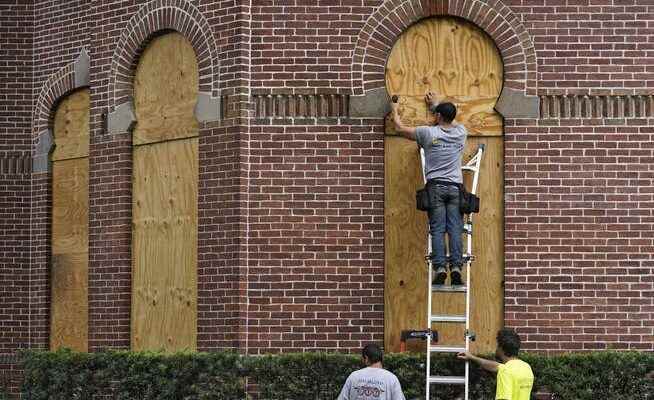Hurricane Ian wreaked havoc on Cuba – and left the entire country without electricity. The hurricane has now reached Florida’s west coast. The most important answers.
Workers panel the windows of the historic Plant Hall on the University of Tampa, Florida campus.
What is the current situation?
“Ian” made landfall on the west coast of Cuba early Tuesday morning and caused severe devastation there. The hurricane then moved toward the Florida coast, gaining strength as it did so. He almost reached the highest level 5. With wind speeds of up to 220 kilometers per hour, the storm is now considered a hurricane in the second highest category, as announced by the American hurricane center.
“Ian” finally made landfall on the west coast of Florida on Wednesday afternoon (local time). The center of the four out of five hurricane struck the coast near the city of Cape Coral, the American hurricane center announced on Wednesday. The authorities warned that serious damage to infrastructure, communication lines and widespread and sustained power outages are to be expected.
The first foothills of the storm had already reached the American state on Wednesday night. The hurricane center warned of more than three and a half meters high “life-threatening”, meter-high storm surges and floods. The region, which is home to more than three million people, could be hit directly by a major hurricane for the first time since 1921.
The hurricane poses a danger to life, even in the days after it has reached land, said the head of the American civil protection agency FEMA, Deanne Criswell, on Wednesday. Large parts of the state are expected to be affected by the expected storm surges on the coast, flooding in the interior of the country and massive rainfall. The water masses are extremely dangerous, warned Criswell.
The director of the National Hurricane Center, Ken Graham, emphasized that it will probably take 24 hours after arriving on land for the hurricane to pass over Florida. That means 24 hours of heavy rain. In parts of Florida, 50 to 60 centimeters of rain are expected in a very short time. Even if the hurricane pulls away, there is still a risk of debris, broken power lines and the like.
“Ian” should then move further north – albeit with significantly less strength. According to the hurricane center, flooding is also to be expected in the neighboring state of Georgia.
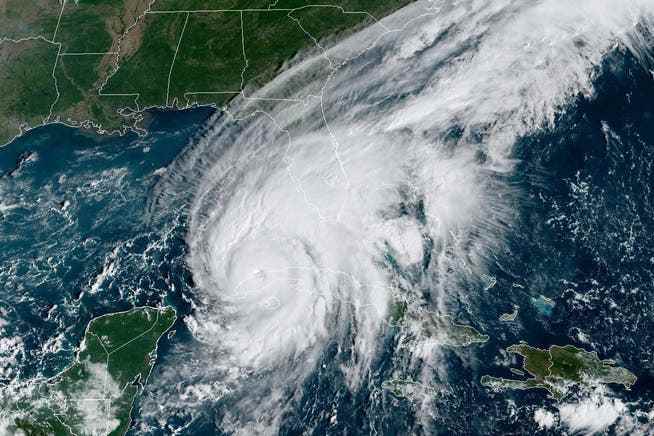
The satellite image shows Hurricane Ian on Tuesday morning over western Cuba.
What damage did the hurricane do?
“Ian” left heavy destruction in Cuba. In the province of Pinar del Río, which was particularly hard hit, two people died after their houses collapsed, the Cuban government said. In addition, there was a nationwide power outage in the Caribbean country. State electricity provider Unión Eléctrica explained on Facebook that this was due to weather-related damage to the power grid.
The supply is now to be gradually restored. Because of the power outages and disruptions to Internet access and telephone connections, information from the areas particularly affected is only gradually reaching the public.
Photos show debris on the streets, houses under water, trees uprooted, houses covered and streets flooded. “The damage is great, although not yet statistically recorded,” wrote President Miguel Díaz-Canel on Twitter after a visit to the province of Pinar del Río, which was particularly hard hit.
Estuvimos en #PinarDelRío. Los daños son grandes, aunque aún no se han podido contabilizar. Ya está saliendo ayuda de todo el país. Confiamos en los pinareños, pueblo noble, trabajador y con mucha experiencia en estas situaciones. Tengan la certeza de que nos vamos a recuperar. pic.twitter.com/zg5VNKA9sN
— Miguel Díaz-Canel Bermúdez (@DiazCanelB) September 27, 2022
The state power company sent hundreds of technicians to the affected provinces to repair aging infrastructure. In Pinar del Río, President Miguel Díaz-Canel saw the damage for himself. “Have the certainty that we will recover,” it said on his Twitter account.
In the capital, Havana, there were also power and water supply failures, and trees fell. Some houses collapsed, as “Granma” reported. Thousands of people had to seek shelter from the aftermath of the storm – most of them stayed with family or friends.
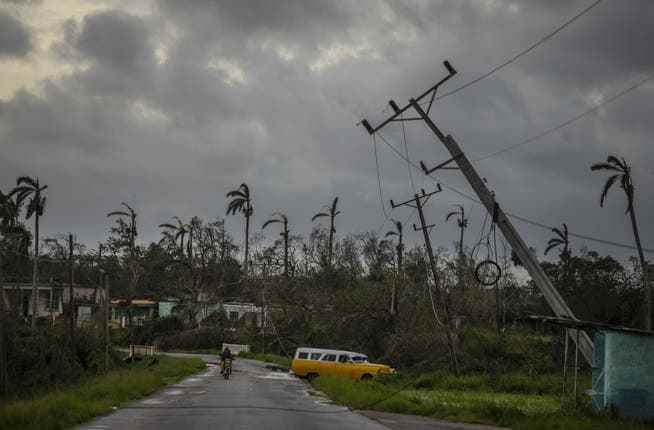
In Cuba, the Pinar del Río region was particularly hard hit by the cyclone.
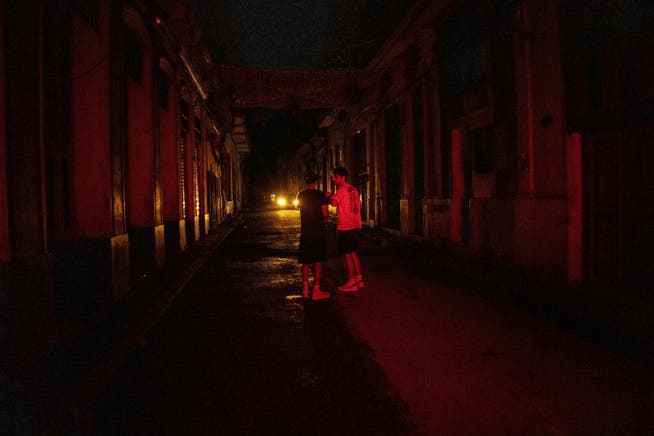
Cuba remained in the dark early Wednesday after Hurricane Ian knocked out the power grid.
How are those responsible reacting?
Authorities and politicians warn of the great destructive power of the hurricane. US President Joe Biden said on Tuesday: “Predictions can change, but at the moment experts say this could be a very severe hurricane, life-threatening and with devastating effects.” Biden stressed that the federal government stands ready to provide all possible assistance to Florida authorities and the affected communities – before the storm, during it and for the necessary reconstruction afterwards. He urged residents of the affected areas to follow the advice of local authorities.
Florida Governor Ron DeSantis called on people to protect themselves. No one should assume that things will turn out lightly again this time, because that has often been the case in the past. Houses can be rebuilt, but personal safety is paramount. “You still have some time, but that time is running out fast,” DeSantis said.
The region expected to be affected by the storm has not experienced a hurricane like “Ian” for around 100 years, said Deanne Criswell from the American Disaster Management Agency Fema. It is important that even people who have not lived in the southeastern state for long and have little experience with hurricanes take the matter seriously.
The authorities therefore began to evacuate residents from coastal locations. Evacuation instructions apply to 2.5 million residents.
“Ian” also messed up the political schedule in the capital Washington. A public hearing by the investigative committee into the Capitol storm, scheduled for Wednesday, has been postponed.
What is a category 4 hurricane?
The hurricanes are classified using the so-called Saffir-Simpson scale. This was introduced in 1969 by meteorologists Herbert Saffir and Bob Simpson at the US National Hurricane Center. The scale is divided into five categories and provides information about the wind speed of a storm. “Ian” was initially classified as a Category 3 hurricane, which corresponds to wind speeds of 178 to 208 kilometers per hour. According to the US hurricane center, it has now reached category four out of five – with wind speeds between 209 and 251 km/h.
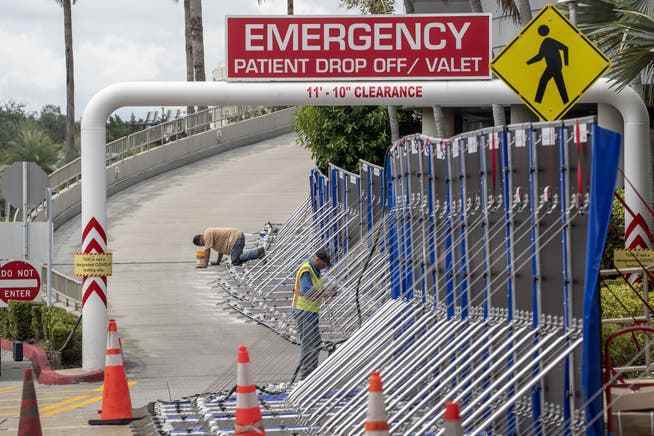
Florida authorities are preparing for Hurricane Ian.
With agency material
